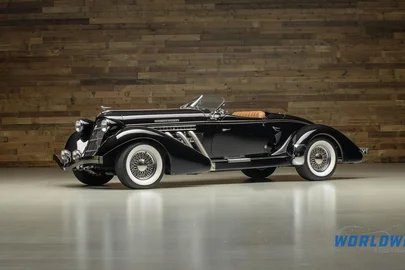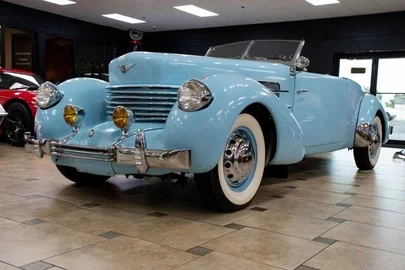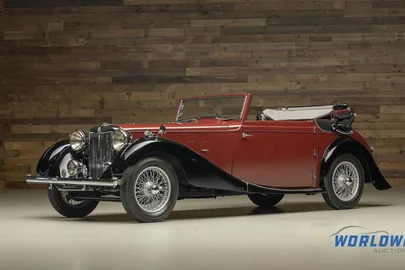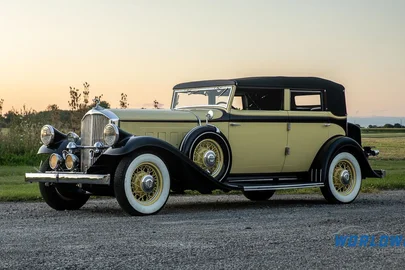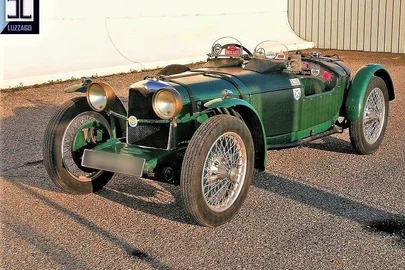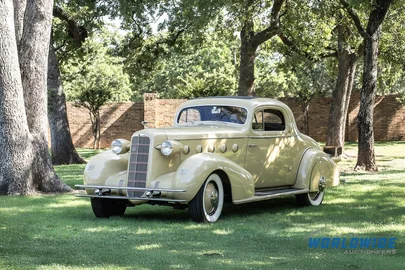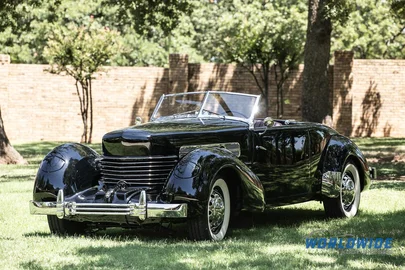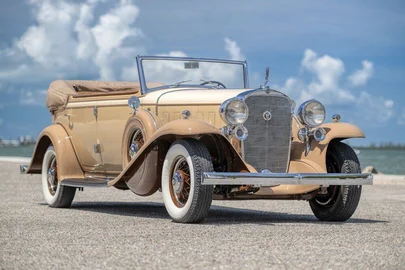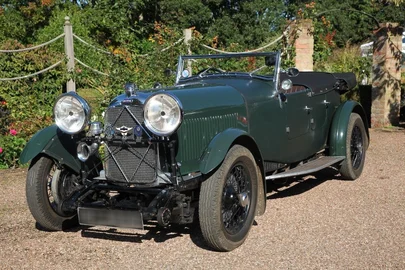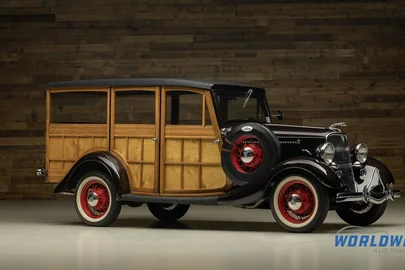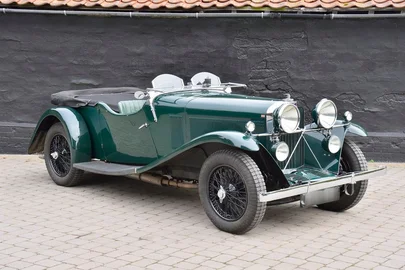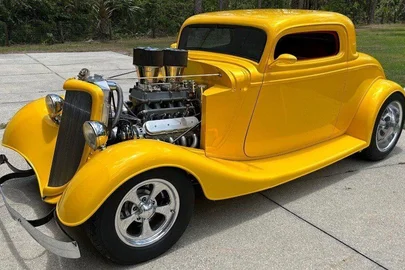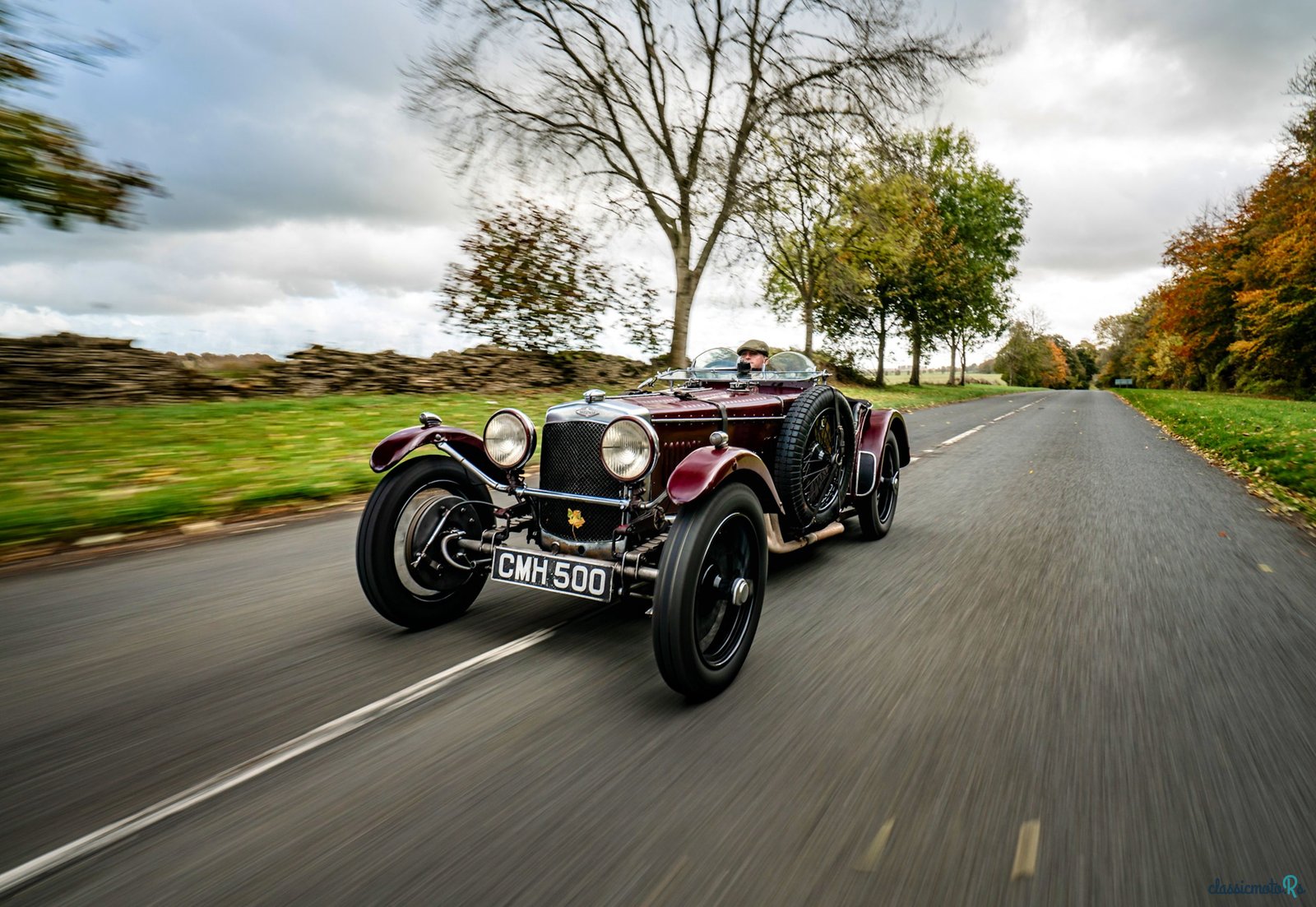


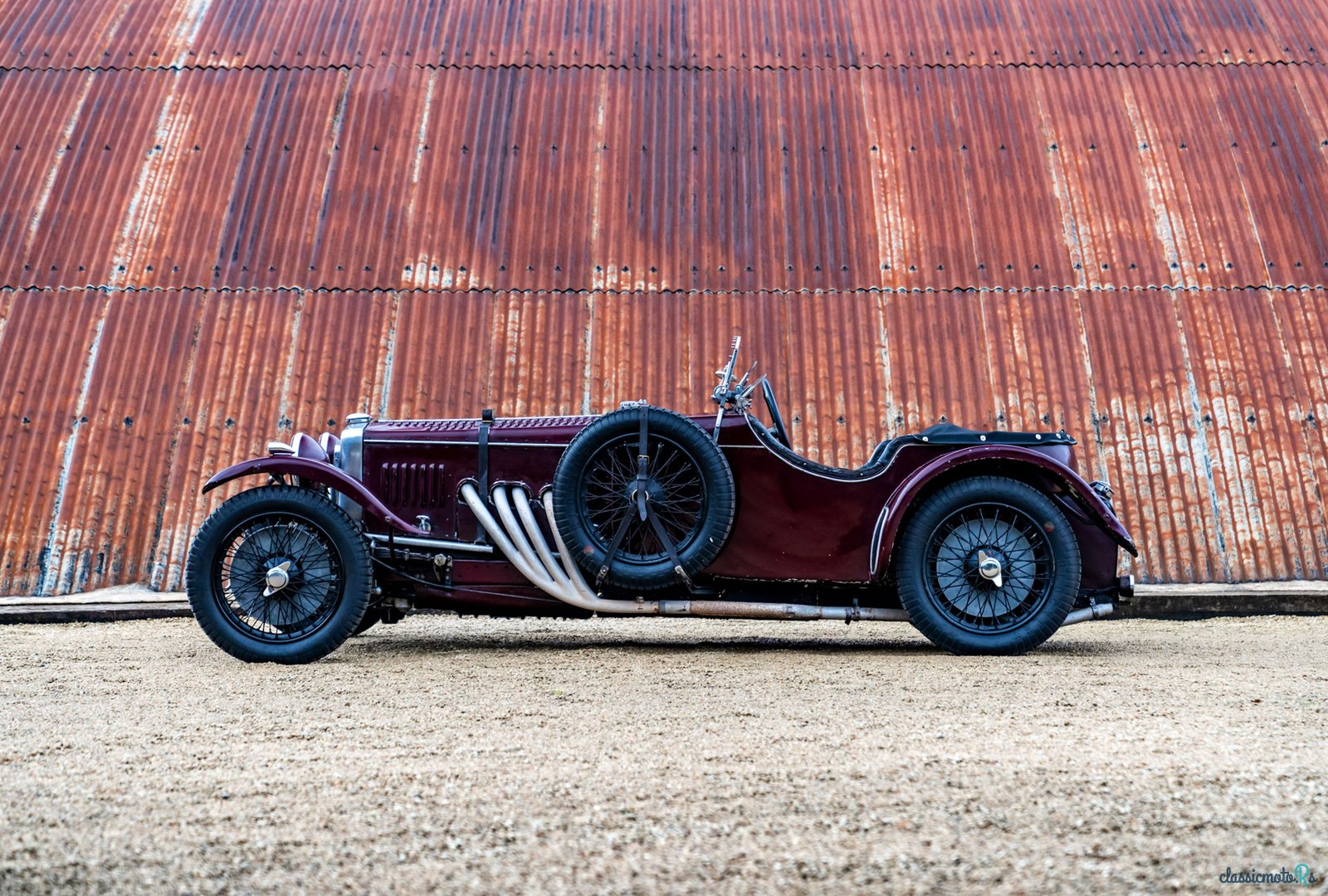
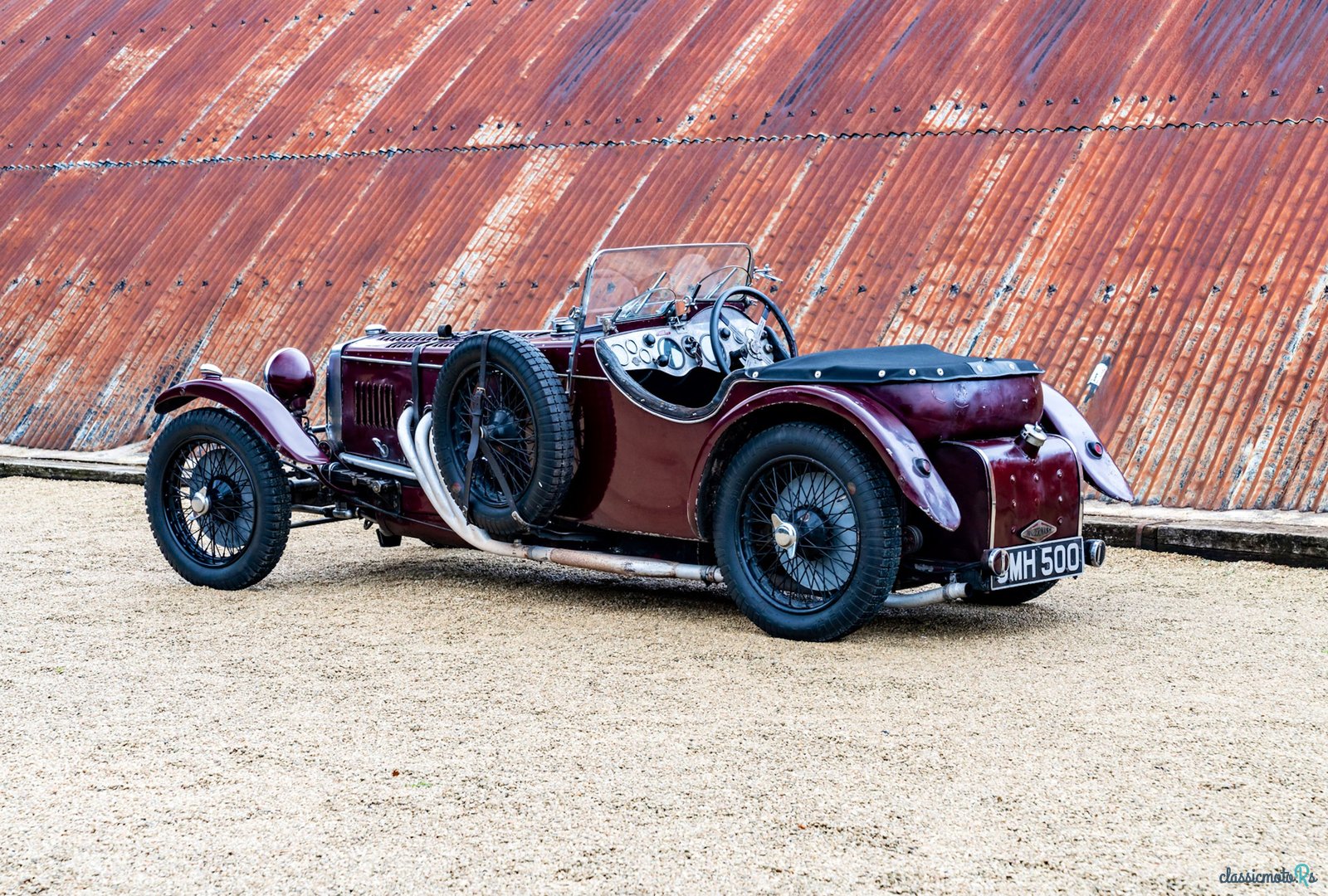

6 photos
1935' Frazer Nash Shelsley
Report This Ad!Rate This!Bookmark This
NegotiablePublished 28 December 2022ID: 2WVmwP
Expired
2 years, 11 months ago
2 years, 11 months ago
Information from the owner
Body: Sports Car
Age: 87 years
Seller's comments about 1935' Frazer Nash Shelsley
Described by legendary Motor Sport scribe and marque authority Denis Jenkinson as ‘the Nash to end all Nashes’ and ‘my favourite sports car of all time’, CMH 500 is one of the most revered of all Frazer Nash cars and boasts a remarkable competition history in the hands of its famous first owner.
Frazer Nash built only eight examples of its Shelsley model, and chassis number 2152 was completed in April 1935 for wealthy young racing driver AFP Fane. Born Alfred Fane Peers Agabeg in India in 1911, Fane moved to England during the 1920s following the death of his father and was educated at Harrow and Cambridge.
A stylish and debonair young man, he started racing in 1931 with his Salmson and soon caught the eye of Frazer Nash director HJ Aldington. The two struck up a strong friendship and Fane would eventually become a shareholder in the company. His competition success at the wheel of various Nashes – allied to his attractive personality – made him the perfect ambassador.
CMH 500 was fitted with Frazer Nash’s Albert Gough-designed, twin-supercharged, overhead-camshaft, 1500cc four-cylinder engine (number 7/ 120). The exact mechanical specification varied between each individual Shelsley, and Fane’s car was built very much with competition in mind. It features twin SUs rather than the more-common single carburettor, duplex chains, and a central radius arm bolted to the back of the bevel box.
The doorless, lightweight TT Replica body lacked any extraneous frills and was finished in Fane’s signature maroon, and during 1935 and 1936 it had a huge amount of competition success. Jenkinson later wrote that it ‘was the standard by which to judge sports cars… its acceleration and general performance being able to match anything in its class and most of those in the larger classes.’
Fane’s record in CMH 500 includes multiple victories at Brooklands and Donington Park, and the Frazer Nash was almost unbeatable in the 1500cc sports car class at sprints and hillclimbs. On one occasion, it was even stripped of its mudguards, lights, windscreen and silencer and entered in the British Empire Trophy at Donington Park – an event for racing cars in which Fane was driving the works single-seater. With Don Aldington at the wheel, CMH 500 brilliantly held its own against Pat Fairfield’s 1100cc ERA – a pure-bred voiturette racer.
Fane always drove the car on the road to and from events, and in September 1935 he competed at the Brighton Speed Trials in the morning, before driving up to Brooklands and racing there in the afternoon. He was hugely popular with the workforce at the Isleworth factory, where he often made spectacular entrances in a perfectly controlled slide.
By 1936, Frazer Nash was increasingly concentrating on the BMW side of its business – it had become the official importer in 1934 – and the era of the chain-driven Nashes was coming to an end. Fane continued to impress after switching to the German cars and won his class in the sports car race at the 1937 Eifelrennen meeting. He also set a sports car record on his first visit to the Grossglockner hillclimb, and took class victory – and eighth overall – on the 1938 Mille Miglia.
This remarkable character had learned to fly during the 1930s but, at the age of 28, was considered too old for fighter duty when war broke out. Instead he ended up in photo reconnaissance, and it was Fane who located the feared German battleship Tirpitz when it was hiding in Norway in January 1942.
Tragically, he was killed later that year when he crashed his Spitfire in poor weather. A memorial seat that was originally built at his Buckinghamshire home has since been moved to the Shelsley Walsh hillclimb.
As for his old Frazer Nash, CMH 500 had been sold in 1937 to a Mr Holroyd, and during the war it was kept at the workshops of Thomson and Taylor at Brooklands, where it had enjoyed so much success during the 1930s. It then passed to CJR Willment in 1945, before being acquired by JA Wicke in 1951. He kept it for 17 years and temporarily fitted an Austin-Healey engine while the original was being rebuilt.
In 1968, the Frazer Nash was bought by Bert Smith, an enthusiast who also owned Sunbeams, Squires and an Alfa 6C-1750. Smith was adamant about retaining the car’s originality and repainted it in Fane’s favoured maroon. In 2004, it passed to his friend Nick Benwell and was later sympathetically rebuilt at Phoenix Restorations in Hartley Wintney, while the engine was overhauled by marque specialist Blakeney Motorsport.
Now being offered for sale by the Classic Motor Hub, this rare, historic and extremely well-known Frazer Nash comes with extensive paperwork that documents its remarkable history. There are period photographs of it being raced at Brooklands, Donington Park and numerous speed trials, plus documentation such as the original programmes from the 1936 and 1937 Stanley Cup meetings and hand-written correspondence from Denis Jenkinson.
This beautifully sorted and delightfully patinated Nash still makes a quick and capable road car, with plenty of torque on offer from the blown Gough ‘four’. Wind it up on the open road and it’s easy to imagine AFP Fane blasting home on a Saturday evening after yet another successful race meeting.
Frazer Nash built only eight examples of its Shelsley model, and chassis number 2152 was completed in April 1935 for wealthy young racing driver AFP Fane. Born Alfred Fane Peers Agabeg in India in 1911, Fane moved to England during the 1920s following the death of his father and was educated at Harrow and Cambridge.
A stylish and debonair young man, he started racing in 1931 with his Salmson and soon caught the eye of Frazer Nash director HJ Aldington. The two struck up a strong friendship and Fane would eventually become a shareholder in the company. His competition success at the wheel of various Nashes – allied to his attractive personality – made him the perfect ambassador.
CMH 500 was fitted with Frazer Nash’s Albert Gough-designed, twin-supercharged, overhead-camshaft, 1500cc four-cylinder engine (number 7/ 120). The exact mechanical specification varied between each individual Shelsley, and Fane’s car was built very much with competition in mind. It features twin SUs rather than the more-common single carburettor, duplex chains, and a central radius arm bolted to the back of the bevel box.
The doorless, lightweight TT Replica body lacked any extraneous frills and was finished in Fane’s signature maroon, and during 1935 and 1936 it had a huge amount of competition success. Jenkinson later wrote that it ‘was the standard by which to judge sports cars… its acceleration and general performance being able to match anything in its class and most of those in the larger classes.’
Fane’s record in CMH 500 includes multiple victories at Brooklands and Donington Park, and the Frazer Nash was almost unbeatable in the 1500cc sports car class at sprints and hillclimbs. On one occasion, it was even stripped of its mudguards, lights, windscreen and silencer and entered in the British Empire Trophy at Donington Park – an event for racing cars in which Fane was driving the works single-seater. With Don Aldington at the wheel, CMH 500 brilliantly held its own against Pat Fairfield’s 1100cc ERA – a pure-bred voiturette racer.
Fane always drove the car on the road to and from events, and in September 1935 he competed at the Brighton Speed Trials in the morning, before driving up to Brooklands and racing there in the afternoon. He was hugely popular with the workforce at the Isleworth factory, where he often made spectacular entrances in a perfectly controlled slide.
By 1936, Frazer Nash was increasingly concentrating on the BMW side of its business – it had become the official importer in 1934 – and the era of the chain-driven Nashes was coming to an end. Fane continued to impress after switching to the German cars and won his class in the sports car race at the 1937 Eifelrennen meeting. He also set a sports car record on his first visit to the Grossglockner hillclimb, and took class victory – and eighth overall – on the 1938 Mille Miglia.
This remarkable character had learned to fly during the 1930s but, at the age of 28, was considered too old for fighter duty when war broke out. Instead he ended up in photo reconnaissance, and it was Fane who located the feared German battleship Tirpitz when it was hiding in Norway in January 1942.
Tragically, he was killed later that year when he crashed his Spitfire in poor weather. A memorial seat that was originally built at his Buckinghamshire home has since been moved to the Shelsley Walsh hillclimb.
As for his old Frazer Nash, CMH 500 had been sold in 1937 to a Mr Holroyd, and during the war it was kept at the workshops of Thomson and Taylor at Brooklands, where it had enjoyed so much success during the 1930s. It then passed to CJR Willment in 1945, before being acquired by JA Wicke in 1951. He kept it for 17 years and temporarily fitted an Austin-Healey engine while the original was being rebuilt.
In 1968, the Frazer Nash was bought by Bert Smith, an enthusiast who also owned Sunbeams, Squires and an Alfa 6C-1750. Smith was adamant about retaining the car’s originality and repainted it in Fane’s favoured maroon. In 2004, it passed to his friend Nick Benwell and was later sympathetically rebuilt at Phoenix Restorations in Hartley Wintney, while the engine was overhauled by marque specialist Blakeney Motorsport.
Now being offered for sale by the Classic Motor Hub, this rare, historic and extremely well-known Frazer Nash comes with extensive paperwork that documents its remarkable history. There are period photographs of it being raced at Brooklands, Donington Park and numerous speed trials, plus documentation such as the original programmes from the 1936 and 1937 Stanley Cup meetings and hand-written correspondence from Denis Jenkinson.
This beautifully sorted and delightfully patinated Nash still makes a quick and capable road car, with plenty of torque on offer from the blown Gough ‘four’. Wind it up on the open road and it’s easy to imagine AFP Fane blasting home on a Saturday evening after yet another successful race meeting.
